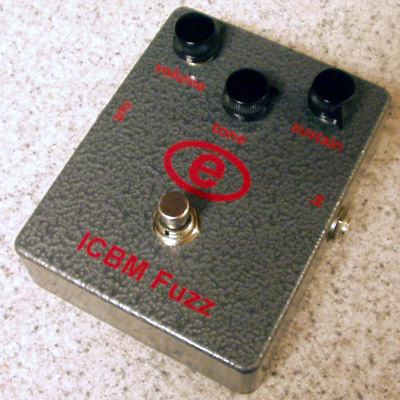<>

Review in the May 2005 Guitar Player
You
may have heard that for a period of time in the 1970's,
Electro-Harmonix changed the circuit of their legendary Big Muff Pi*
from one
based on discrete transistors to one based on integrated circuit
operational
amplifiers. This is true.
As a matter of fact, the opamp Big Muff Pi was the
first
fuzzbox I ever fell in love with, back in 1983. I didn’t know that it
was an
opamp one until I bought my own Big Muff and thought it sounded
different from
my friend’s. His later needed repair, and when I opened the case to
check it
out, I saw that the printed circuit board had a pair of integrated
circuits on
it, where mine had transistors.
Over the next 20 years, I never again encountered a Big Muff Pi made with opamps. Mike Matthews of E-H went out of business a couple of times, then got into the vacuum tube business, started making Big Muffs again, and then launched a new Electro-Harmonix with a mix of historical E-H effects and new ones. Still no opamp Big Muff Pi.
I myself started building and selling effects, helped greatly by the information available on the www, but when I tried building opamp Big Muffs from the schematics I found on the web, they didn’t work. Finally, I got my hands on an actual unit, and sat down with it to see if I could learn its secrets and make my own.
It worked, and once again I heard that immense yowl that only an opamp-based Big Muff circuit can make. And once again, the music-playing public can get that sound for their very own.Unlike the old one, mine has true bypass switching, a fiberglass printed circuit board, and a cast aluminum case. As with the rest of the Euthymia pedals, I use silver Teflon wire for all interconnections.
A 9V dc power jack is now standard on every ICBM Fuzz.
Special thanks to Howard Davis, original designer of the opamp Big Muff!
*Big Muff Pi is a trademark of Electro-Harmonix, with whom Euthymia Electronics is not affiliated.
